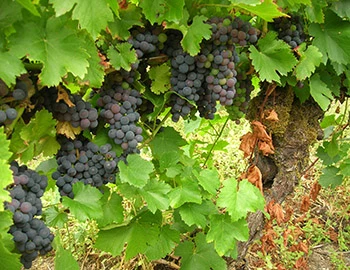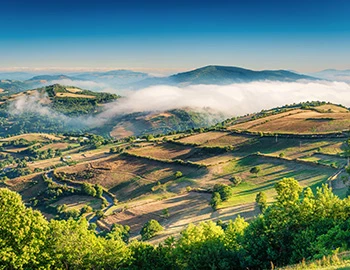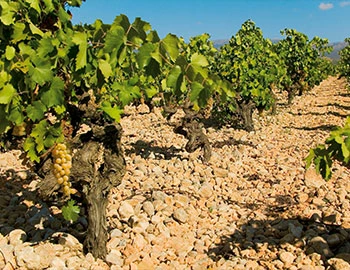
Pétalos del Bierzo 2020
DO Bierzo, Descendientes de J. Palacios, 750 ml

Description
Spain’s star winemaker Álvaro Palacios has teamed up with his nephew Ricardo in Bierzo to create an excellent Mencía-based red wine. It is as silky and soft as its name, Pétalos, which means petals in Spanish. The bouquet wreathes the nose in notes of ripe raspberry, thyme and vanilla. On the palate it is juicy, silky and full of wild berry notes.Pétalos is your start into the world of Bierzo wine in a charming and accessible way with excellent price-enjoyment ratio and a fresh, crisp and juicy characteristic, with inviting red fruit aromas paired with earthy and spicy notes. It is made of more than 90% Mencía, the rest are red and white autochthonous grape varieties with sometimes funny names like Pan y Carne (bread and meat), Negreda, Godello, Valenciana and some more. The plots are located on different municipalities. The vines are 40 to 90 years old.
Attributes
| Origin: | Spain / Galicia / Bierzo |
| Grape variety: | Mencia |
| Ripening potential: | 2 to 10 years |
| Drinking temperature: | 16 to 18 °C |
| Food Pairing: | Latin American dishes, Spiced grillades, Rabbit ragout with olives, Hot vegetable curries |
| Vinification: | partly destemmed, fermentation in steel tank |
| Harvest: | strict selection |
| Maturation: | in partly new and used barriques/ Pièces |
| Bottling: | no filtration |
| Maturation duration: | 9 months |
| Volume: | 14.0 % |
| Note: | Contains sulphites |
Descendientes de J. Palacios, S.L.
In the late 1990s, Álvaro Palacios came to Bierzo in search of a new challenge after having achieved great success in the Priorat. Bierzo, in the far northwest of Castilla y León, awaited him with its wild, craggy landscape where heather, rock roses and holly oaks dominate the flora, with its climatic and geological characteristics, and with the fascinating grape variety Mencía.
His first experience with this native grape variety was with the Pérez Perreira family at their Castro Ventosa winery in the village of Valtuille de Abajo. In 1999, he teamed up with his nephew Ricardo Pérez Palacios, known as Titín, to found the Bodega Descendientes de J. Palacios in the municipality of Corullón.

Mencia
Mysterious origin, today widespread
Mencia is a red, Spanish variety currently cultivated on an area of around 10,000 hectares. The origin of Mencia has not been definitively determined. It was long surmised that this vine was a mutation of the French Cabernet Franc, which came via the Way of St. James to Bordeaux. Nowadays, it is assumed that the Mencia cultivar is descended from an autochthonous native variety. Mencia is widespread throughout Galicia and Castile, and is confined almost exclusively to northwestern Spain.
Red wine derived from Mencia grapes is usually rather pale, intense in the nose, and smooth and fresh in the mouth.

Bierzo
Bierzo: to the top with the Mencia variety
At the beginning of the 90s, the Bierzo region, which is crossed by the Camino de Santiago, was barely known in the international wine scene. It was only when new residents and investors began to bottles top crus from selected slopes, which perfectly united finesse and force, that interest in this region and its primary variety grew. This variety, Mencia, is considered one of the highest quality red wine varieties in the Iberian Peninsula.

Galicia
Galicia: shaped by the cool Atlantic
Situated in the far northwest of the Iberian Peninsula, Galicia is like a tip which pushes west toward the Atlantic Ocean, north of Portugal. In keeping with this exposed location, wines made here, with their fresh, straightforward character, depart strikingly from the general style of Spanish wines. With four cultivation areas with DO status, Galicia is drawing noticeably more international interest. White wines from autochthonous varieties are mostly produced here.

Spain
Spain – Variety and perfection
“Somewhere in la Mancha, in a place whose name I do not care to remember...,” begins Don Quixote's odyssey.
The most famous part is definitely when Don Quixote thinks windmills are his enemy and wants to fight them – until they nearly kill him. It’s possible there was a bit too much of the La Mancha wine at play. Spanish vines fight for their survival in rugged landscapes, battling fierce drought and rough soils. But they fight well.


